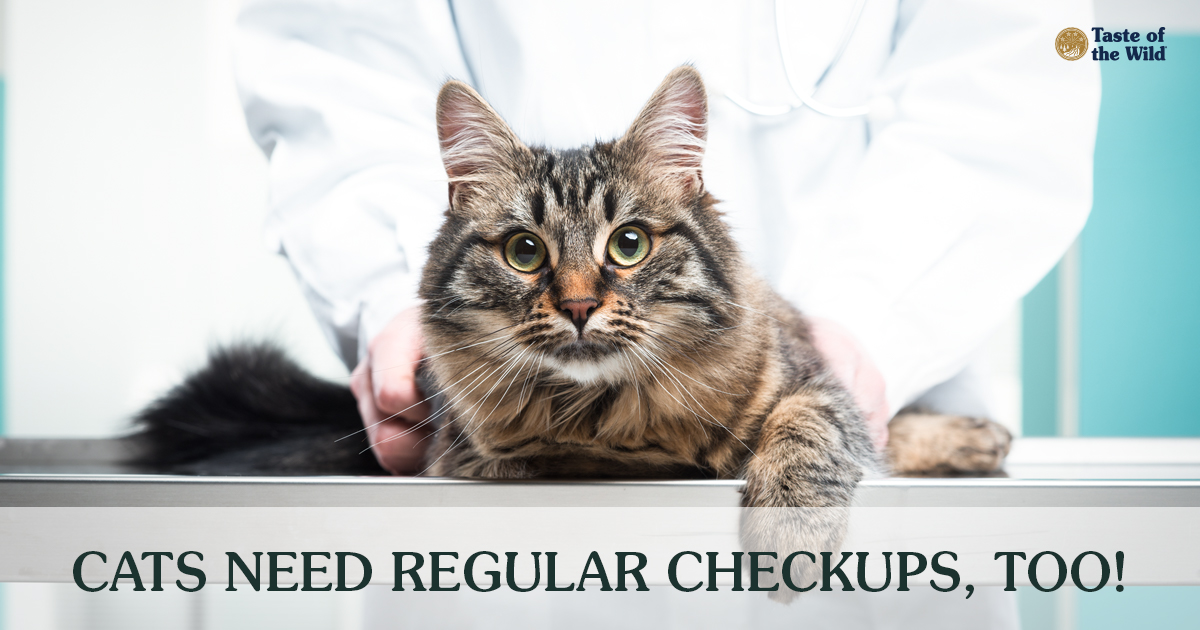
When it comes to regular veterinary checkups, cats are left holding the short end of the wand toy. While 78.8 percent of dog owners said they made at least one veterinary trip per year for preventive care, only 47.2 percent of cat owners did the same, according to the American Veterinary Medical Association’s latest edition of Pet Ownership and Demographics Sourcebook.
What’s keeping cats away?
Once considered solely indoor/outdoor mouse deterrents, cats have now become pampered members of the family. Yet some owners still see their cats as independent animals that need little or no veterinary care.
Also, for many owners it’s easy to miss signs of illness or pain in cats. That’s because cats are adept at hiding these signs, a lesson learned from their wild feline ancestors who hid illness to prevent themselves from becoming prey.
Some cats will question why they need a checkup and will do anything to avoid the cat carrier and car ride to the veterinarian. So owners may decide the stress and the struggle isn’t worth it.
Finally, now that many vaccines are only given every three years, owners may assume there’s no need to bring their cats in for regular exams, especially if they’re indoor-only cats. The trouble is, even indoor cats can suffer from dental disease, obesity, urinary tract issues, parasites and other problems.
Cats age faster than humans
At one year of age, a cat is the equivalent of a 15-year-old teenager and matures to about a 24-year-old-human at 2 years. After that, every year tacks on about four years of “human aging” for cats, so an 8-year-old cat is essentially the same as a middle-aged, 48-year-old human.
Since there can be significant health changes over the course of four human years, cats should have a veterinary checkup once a year or more, depending on the cat, according to feline preventive care guidelines established by the American Animal Hospital Association and the American Veterinary Medical Association.
Prevention is better than treatment
Most cats don’t show overt signs of pain or illness until the problem is advanced. But with regular preventive care and early intervention, common feline health problems such as kidney disease, osteoarthritis, hyperthyroidism and even cancer can be detected earlier, when they are often more treatable and less expensive.
To help make regular checkups easier, look for a cat-friendly practice. These veterinary practices must meet certain criteria, all designed to make the visits less stressful on cats and their owners. They even provide you with tips on how to get your kitty to the clinic without a fuss, and once you arrive, they’ll use gentle handling techniques to help put your cat at ease.
With regular, preventive veterinary care, more cats can live longer, happier and more pain-free lives. Which means they’ll have more time to prove why they’re superior to their canine counterparts, or that, as the saying goes, “cats rule and dogs drool.”
RELATED POST: Acute vs. Chronic Pain: When Your Pet Needs Help
The information in this blog has been developed with our veterinarian and is designed to help educate pet parents. If you have questions or concerns about your pet's health or nutrition, please talk with your veterinarian.
